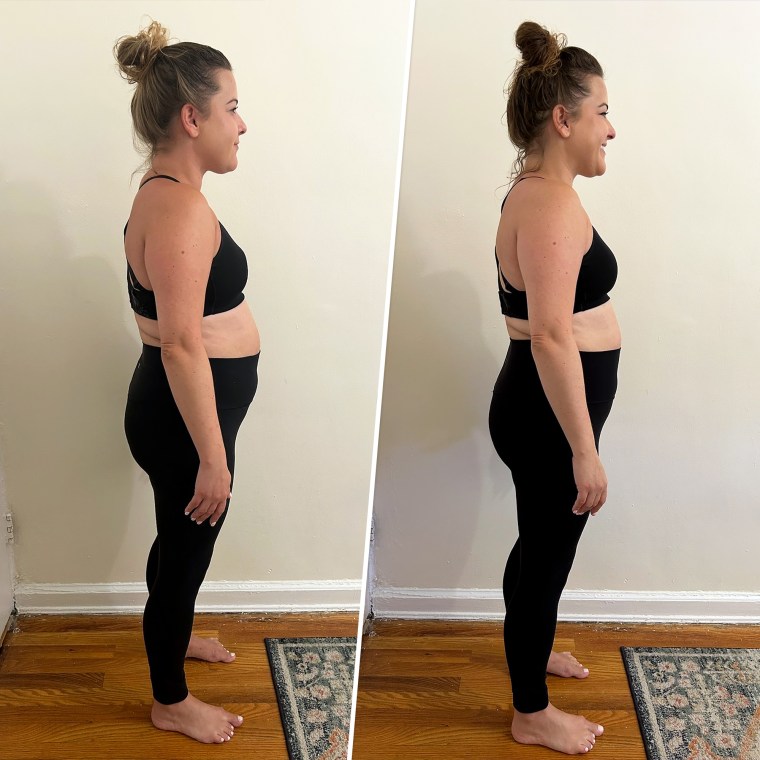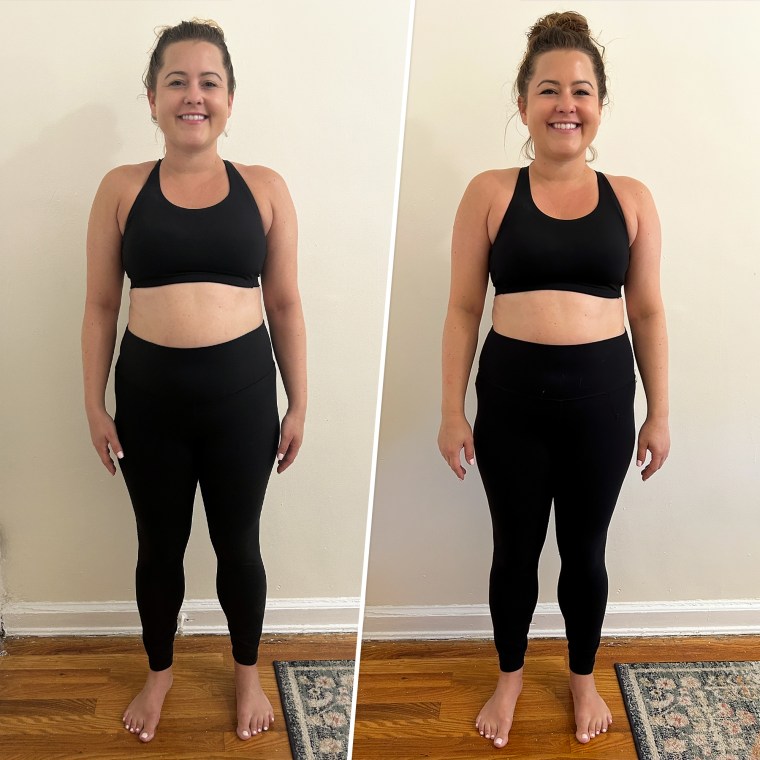I have an on-again, off-again relationship with exercise. There was a time in my 20s when I worked out consistently. I took a mix of fitness classes, such as boxing, cardio dance, HIIT and even bootcamps, when I was feeling really ambitious.
When the pandemic hit and everything shut down, I kept working out through virtual classes to try to cling to some sense of normalcy.
Once the world opened back up, I fell off. My job remained remote, so I had no real reason to leave my apartment. I tried to return to the classes I’d loved, but so many studios had closed down, and the remaining ones were no longer convenient for me without an office nearby.
These days, the most exercise I get is walking from my bed to my couch to my “office” inside my 700-square-foot apartment.
My lack of daily movement had started to take its toll. In addition to gaining weight, I had no energy, struggled to fall asleep, and had body aches.
I’m only 37. I’m too young to feel this old. I knew I had to do something to get more movement into my daily routine. My social media algorithm must have sensed this, relentlessly serving me video after video of fitness influencers out on their hot girl walks, trying to get their steps in.
Could walking an hour every day really do anything substantial for my health? Stephanie Mansour, Start TODAY trainer and TODAY fitness contributor, assured me it could. “Regular walking can significantly contribute to weight loss by burning calories and boosting your metabolism,” she explained. According to Mansour, walking can also improve cardiovascular health by strengthening your heart, lowering your blood pressure, and reducing the risk of heart disease. My blood pressure was borderline high at my last physical, so this got my attention.
I’d also been having chronic back and shoulder pain, which, you guessed it, can see improvement from simply walking more. “Daily walks create muscle endurance, strengthen bones, and improve joint health, making it a fantastic low-impact exercise option,” Mansour says.

Committing to a non-negotiable walk for an hour a day seemed like the lowest-effort way to motivate myself to move more, so I decided to give it a try. Here’s what happened:
Week 1
On day one, I weighed in at 149 pounds. This is the most weight I’ve ever carried on my 5’2” frame, and it was shocking to see. I took my measurements, laced up my sneakers and braced myself for an hour of walking.
I was surprised at how tired I became almost immediately — the minutes dragged by. I attempted to pass the time by calling my mom to catch up. By the end of the call, I thought I’d knocked out at least half an hour of my walk. I was shocked to see only 13 minutes had gone by.
The next day, the backs of my legs were sore, and I wasn’t looking forward to this walk at all. I decided to break it up into half-hour increments, which were easier to complete separately, but made me dread that last half hour for the rest of the day. It was so tempting to skip it. Halfway through week one, I decided that breaking my walk in two was dragging things out and went back to a full hour. To keep myself motivated, I found destinations to walk to that I had wanted to visit. Some days, it was making it down to the park, about a half-hour walk from me each way. Most days, it was a cute coffee shop or lunch spot I’d wanted to try.
By the end of week one, I had accepted that walking for an hour was now a permanent part of my daily routine, but never looked forward to it. I did notice I was sleeping a bit better than I normally do. Each day, I knocked my walk out first thing, which gave me a more consistent morning routine.
Struggling to start your own walking routine? Ease into it with this 7-Day Audio Walking Challenge for a daily motivational podcast to help you get your steps in!
Week 2
Walking wasn’t quite as painful during week two, and most days I was able to knock it out with a podcast and forego getting myself a little treat (though it was hard to resist). I felt my stamina improve toward the end of this week, and I noticed I got slightly farther on my walks in the same amount of time as I had during the previous week. At first, I struggled to get my walks over the two-mile mark, but by the end of week two, I was hitting 2.5 miles without much trouble.
Everything was going well until a heat wave hit my city. Up until this point, I’d been walking outdoors, but several days during week two hit almost 100 degrees, so I had to find an alternative. I dusted off my barely used gym membership to complete my hour-long walks on a treadmill for a few days while I waited for things to cool off. It took the pressure off of figuring out what route I’d take, but by the third day of this, I was pretty bored.
For days when the weather doesn’t cooperate, try a fun Indoor Walking Routine with Al Roker!
Week 3
During week three, I went to visit family in Long Island. Thanks to the change in scenery, this was probably the only time I really enjoyed walking for an hour.
“Variety can keep things interesting and prevent burnout,” says Mansour, who encouraged me to change my routine to challenge different muscles and avoid boredom. So I committed to trying a new path every day to give my mind something new to focus on.
Walking was finally part of my routine. I’d wake up around the same time each morning, get my walk out of the way, have breakfast and log on to start working for the day. During week three, I noticed a shift in my energy levels and overall mood. I felt more focused at work and more invigorated overall. Also, I slept like a baby.
“Beyond the physical changes, walking delivers impressive non-scale victories (NSV),” Mansour explains. “Many people experience a noticeable boost in energy levels and better sleep quality,” Mansour said. Walking is also a great mood enhancer, releasing endorphins that combat stress and anxiety, making you happier and more balanced.
By this point in my experiment, I’d built decent stamina walking. That is, until I tried to walk on the beach. The resistance of the sand and slope of the shore had my calves burning within the first few minutes of walking. At what I thought had to be the halfway point, I looked down at my phone to find that I’d been walking for a whopping seven minutes. I felt defeated, but persevered, breaking that walk into half-hour intervals.
Week 4
By week four, I was over this walking experiment. The benefits you read about really are there. But I wanted my lazy mornings back in the worst way. Every morning, I had to convince myself not to quit or skip a day here and there. On the flip side, I was in a great mood every morning when I came back from my walk. I was happy that I’d gone. I was walking much more easily and my speed was noticeably faster. During week 4, I hit three miles for the first time. I reminded my pre-walk self about that post-walk feeling every day during this week. The day after I completed my one-month experiment, I spent the entire day sitting on my couch watching movies with my cat.

The Result: 5 Pounds Down and Mood Way Up
I waited until the end of the experiment to weigh myself again, out of fear that I hadn’t lost any weight. When I weighed in, I was shocked to see the scale read 144.6. I’d also lost an inch off my chest and an inch off my thighs.
The weight loss was nice, but it wasn’t the best part of this experiment — it was feeling so much better overall. There’s unfortunately no magic pill to get better sleep, mood, energy and focus — but walking an hour a day is a pretty low lift way to achieve these things. Something I’ve been trying to remember post-experiment when I don’t feel like going on another walk.
Source link
:max_bytes(150000):strip_icc()/taylor-29ae3ce873e94956bd2428d10e315da4.jpg)